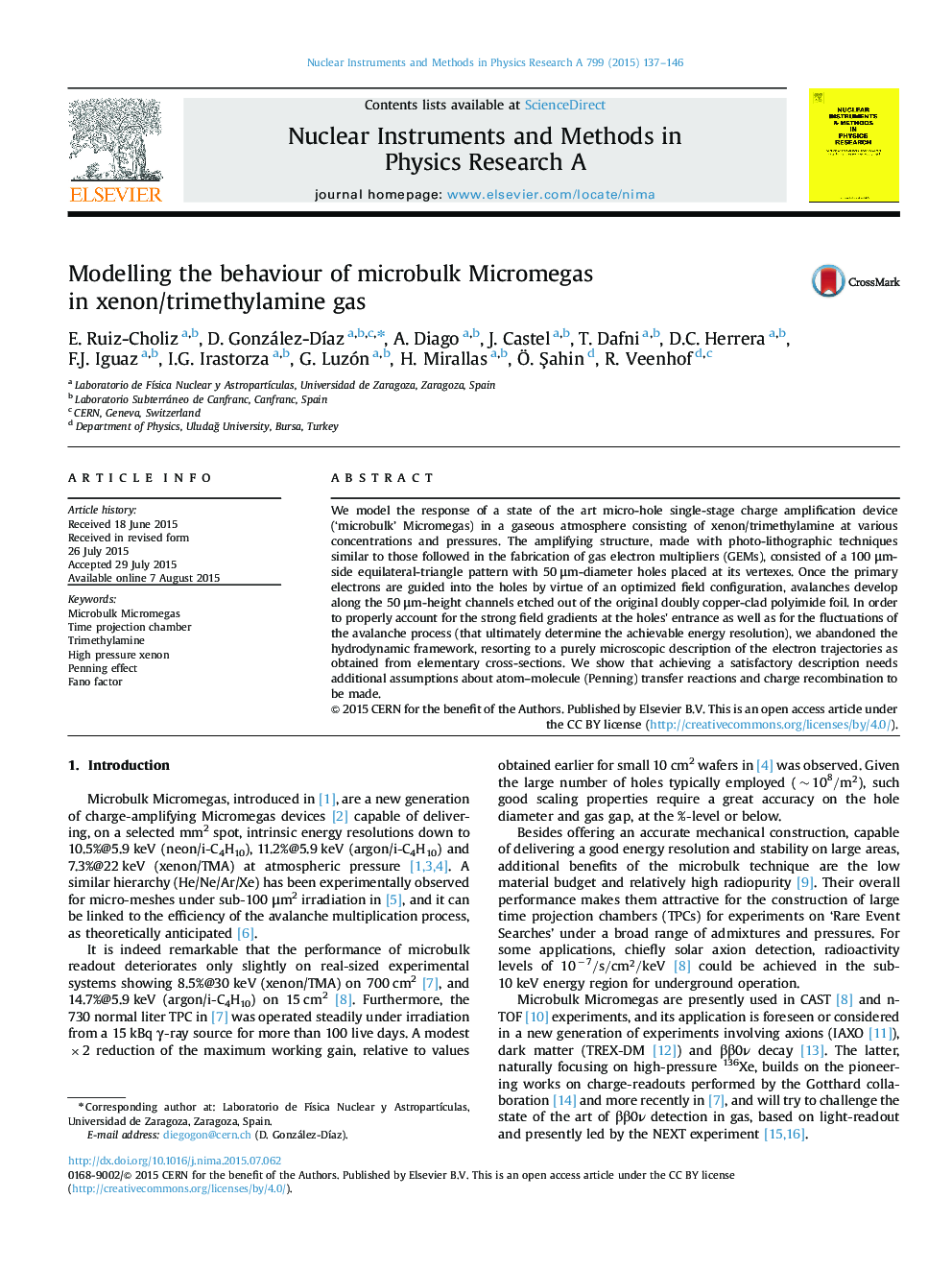| Article ID | Journal | Published Year | Pages | File Type |
|---|---|---|---|---|
| 8171995 | Nuclear Instruments and Methods in Physics Research Section A: Accelerators, Spectrometers, Detectors and Associated Equipment | 2015 | 10 Pages |
Abstract
We model the response of a state of the art micro-hole single-stage charge amplification device ('microbulk' Micromegas) in a gaseous atmosphere consisting of xenon/trimethylamine at various concentrations and pressures. The amplifying structure, made with photo-lithographic techniques similar to those followed in the fabrication of gas electron multipliers (GEMs), consisted of a 100 μm-side equilateral-triangle pattern with 50 μm-diameter holes placed at its vertexes. Once the primary electrons are guided into the holes by virtue of an optimized field configuration, avalanches develop along the 50 μm-height channels etched out of the original doubly copper-clad polyimide foil. In order to properly account for the strong field gradients at the holes׳ entrance as well as for the fluctuations of the avalanche process (that ultimately determine the achievable energy resolution), we abandoned the hydrodynamic framework, resorting to a purely microscopic description of the electron trajectories as obtained from elementary cross-sections. We show that achieving a satisfactory description needs additional assumptions about atom-molecule (Penning) transfer reactions and charge recombination to be made.
Related Topics
Physical Sciences and Engineering
Physics and Astronomy
Instrumentation
Authors
E. Ruiz-Choliz, D. González-DÃaz, A. Diago, J. Castel, T. Dafni, D.C. Herrera, F.J. Iguaz, I.G. Irastorza, G. Luzón, H. Mirallas, Ã. Åahin, R. Veenhof,
